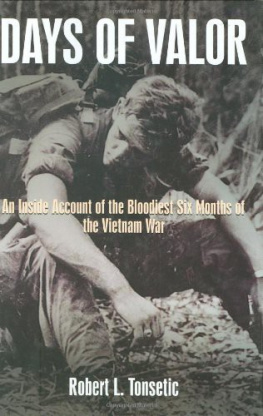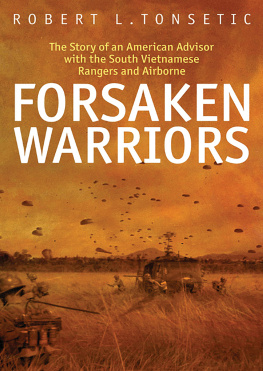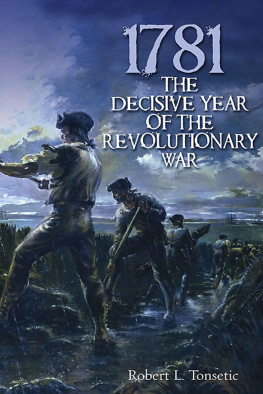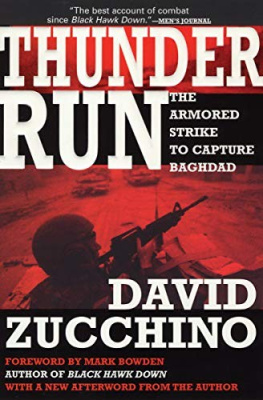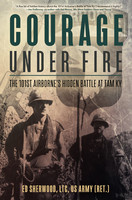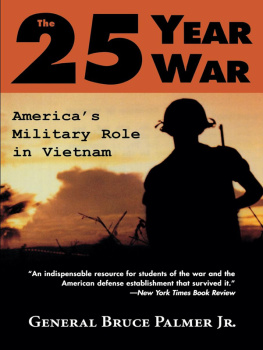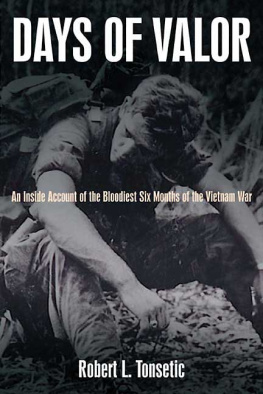

Published in the United States of America and Great Britain in 2010 by
CASEMATE
908 Darby Road, Havertown, PA 19083
and
17 Cheap Street, Newbury, Berkshire, RG14 SDD
Copyright 2007 Robert L. Tonsetic
Reprinted November 2010
Paperback Edition: ISBN 978-1-935149-38-5
Digital Edition: ISBN 978-1-61200-0343
Cataloging-in-publication data is available from the Library of Congress and the British Library.
All rights reserved. No part of this publication may be reproduced or transmitted in any form or by any means, electronic or mechanical, including photocopying, recording or by any information storage and retrieval system, without permission from the Publisher in writing.
Printed and bound in the United States of America.
For a complete list of Casemate titles please contact:
CASEMATE PUBLISHERS (US)
Telephone (610) 853-9131, Fax (610) 853-9146
E-mail: casemate@casematepublishing.com
CASEMATE PUBLISHERS (UK)
Telephone (01635) 231091, Fax (01635) 41619
E-mail: casemate-uk@casematepublishing.co.uk
For the brave men of the 199th Light Infantry Brigade who gave their lives for their country, and for the men who shared their foxholes during 19671968.
PREFACE
This book is about acts of courage and valor, and the men who performed them. Few, if any, of the men described in this book consider themselves heroes. Among them, this accolade is reserved for those who made the ultimate sacrifice. Most of the veterans who contributed their stories to this book attempt to downplay their experiences and deeds. Nonetheless, it is important that their stories be told. For as the Greek poet Pindar wrote, Unsung, the noblest deed will die. The intent of the author is not to glamorize war or justify it, but rather to preserve the stories of heroism and sacrifice. Since the experience of warthe fighting, the dying, the survivingis all but impossible to comprehend unless one has experienced it, those who may be called upon to take up arms in defense of the nation must have role models for proper behavior in war.
As we begin our fifth year in the war against terror, we face a prolonged conflict that may test our national will as never before. There exists a possibility that a catastrophic attack will be launched against the US homeland, or against our deployed forces that will make the 9-11 attacks pale in comparison. The generation of men and women coming of age today face challenges not unlike those that confronted the much heralded greatest generation.
The heroic deeds, selfless sacrifice, and valor demonstrated by our fighting men in past wars provide necessary models for the youth of America as they assume responsibility for the nations security. Sadly, the deeds of valor from our most prolonged conflict, the Vietnam War, remain mostly unreported and forgotten. Unlike the almost legendary stories of heroism that evolved from World War II, such as the Army Rangers assault on the cliffs of Pointe Du Hoc or the Marines capture of Iwo Jima, the number of stories emerging form the Vietnam War are few. The reasons are complex and rooted in the political and strategic miscalculations of that war. Perhaps the most odious reason is that the opponents of that war unjustly focused their anger and frustration with the conflict on those who fought it. Despite the fact that there were far more heroes than miscreants in the ranks, stories of atrocities and abuses far outnumbered the reports of American valor and sacrifice. Unfortunately, the anti-war movements efforts to discredit the rank and file who fought the war was abetted by the media. Stories of atrocities and criminal conduct perpetrated by members of the armed forces, like airline crashes, are rare, but make front-page and prime-time news. A similar trend is beginning to emerge in Iraq and the war on terror. Reports of prisoner abuse and other discreditable acts should be reported, but equal attention should be paid to the numerous individual and unit acts of valor and sacrifice. The latter far outnumber the former.
Days of Valor covers a six-month slice of time during the Vietnam War from December 1967 through May of 1968. These months, which encompassed both the Tet Offensive and the May Offensive of 1968, were the bloodiest months of the war for US forces. Most of the book is focused on the infantry battalions of the 199th Light Infantry Brigade as they struggled to disrupt the enemys build-up and subsequent attacks on the strategic installations in and around Saigon, Bien Hoa and Long Binh. Though the authors experiences are included in the book, they are written in the third person format. The book is not intended to be a personal memoir. There were many other US units that played key roles in defeating these attacks, and similar acts of heroism and valor occurred in all of these units. The narrow focus of this book allows the author to tell the stories of the men who performed the deeds of valor through their own eyes and words. There is much to learn from the experiences of Vietnam combat veterans, and they deserve a chance to contribute to the history that is written about the Vietnam War.
The majority of this book focuses on battle, even though the number of days spent in battle during a one-year tour in Vietnam was a small percentage of the average twelve-month tour. Most days for the average combat soldier consisted of exhausting marches and tedious searches for an elusive enemy. The physical and mental demands on the combatants during these periods were exceeded only by the relatively short periods of actual battle. Full descriptions of the everyday life of a combat soldier in Vietnam can be found in the many fine personal memoirs of the war.
Few of the men who provided details of their Vietnam experience for this book had discussed their service with anyone outside the veteran community since the war. In some cases, the men who related their stories to the author were personal acquaintances. Others were introduced during reunions, or contacted by telephone or email. As a fellow veteran, there was an element of trust between the author and the men who related their experiences. Shared combat experience generates a sense of camaraderie and brotherhood that withstands the tests of time. In some cases, the author gained a new perspective of his own experiences after talking with other veterans. Without exception, the men with whom the author communicated were remarkably honest and forthright about their combat experience and the effect it had on their lives. Their recollections of combat are corroborated by other sources such as official records and documents held by the National Archives.
It is hoped that the reader will gain a new appreciation for the men who fought in Vietnam. The stoicism that they demonstrated in the midst of an unpopular war is impressive. Their ability to endure under the most difficult conditions and continue on with the mission, even though worn out and exhausted, and fighting for a cause they little understood, is remarkable. Those who gave their lives, as well as those who survived, should serve as an inspiration for all those called upon to defend the nation in current and future wars.

The author thanks the many veterans of the 199th Light Infantry Brigade who over the past several years shared their memories and recollections of the events described in Days of Valor. In particular, I appreciate the insight and encouragement provided by Colonel William Schroeder, who was at the center of many of the events described in this book, both as a battalion commander and later as a key staff officer at II Field Force Headquarters. While the research for this book was in progress, it was brought to his attention that two members of his battalion never received the Silver Stars that he had recommended. Bill Schroeder reinitiated the award recommendations, spending days of his personal time to insure that his men received the awards, and then organized an appropriate ceremony for the presentation of the awards in 2005.

